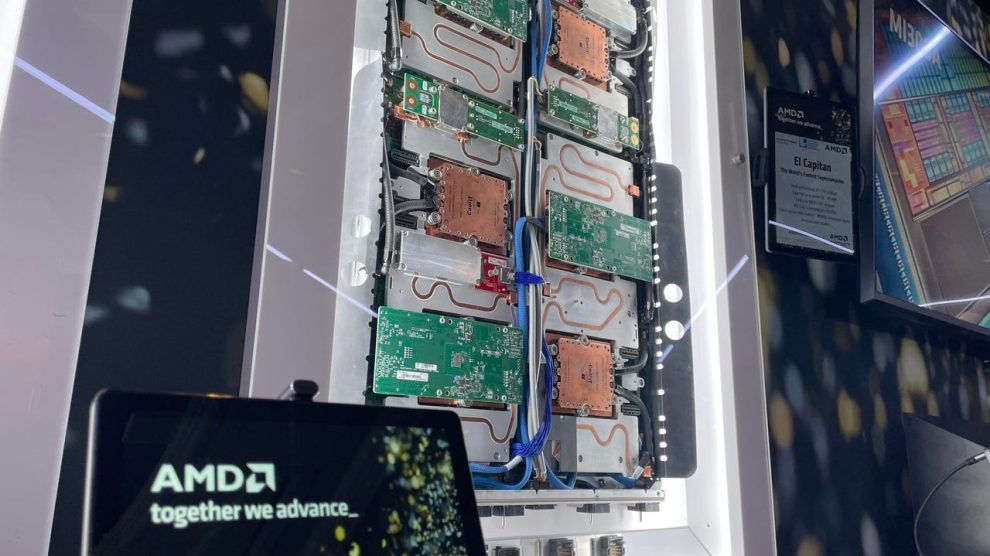AMD’s growing influence in the gaming industry has become increasingly evident, with the company’s announcements at CES 2025 highlighting its ambition to expand its footprint in a market traditionally dominated by Intel. While Intel has long been considered a key player in gaming hardware, AMD’s innovative strategies and relentless advancements are positioning it as a formidable competitor. The developments unveiled at CES are a clear indication that AMD is not just content with being an alternative but is striving to redefine its role as a leader in gaming technology. This shift is sparking significant concern for Intel, which now faces mounting pressure to maintain its relevance in a rapidly evolving market.

AMD’s presence at CES 2025 revolved around unveiling next-generation gaming products and technologies designed to elevate performance and user experience. Central to these announcements were advancements in CPUs, GPUs, and integrated technologies aimed at offering gamers unparalleled value and performance. AMD’s Ryzen processors, in particular, have garnered attention for their superior efficiency, competitive pricing, and ability to deliver high-end gaming experiences. By pushing the boundaries of what gaming hardware can achieve, AMD is not just catering to hardcore gamers but is also addressing the needs of mainstream users looking for reliable, high-performance solutions.
The company’s push into gaming is further bolstered by its leadership in graphics processing technology. AMD’s Radeon GPUs have consistently competed with NVIDIA’s offerings, and the latest releases continue this trend by delivering cutting-edge features at attractive price points. For gamers, the choice between AMD and Intel is no longer a matter of compromise; AMD has proven its ability to compete on equal footing, providing high frame rates, realistic visuals, and smooth gameplay. The integration of technologies like FidelityFX Super Resolution and enhancements in ray tracing capabilities have positioned AMD as a brand that understands and delivers on the demands of modern gaming.
Intel’s dominance in gaming has historically been rooted in its CPU performance and its reputation for delivering consistent quality. However, AMD has effectively challenged this narrative with its Ryzen processors, which offer superior multi-threading capabilities and enhanced energy efficiency. These features are particularly appealing in gaming scenarios where performance and thermal management are critical. The shift in market perception is evident in how AMD’s processors are now favored by a growing segment of gamers and system builders, leaving Intel to contend with a competitor that is no longer operating in its shadow but standing as an equal, if not superior, rival.
At CES 2025, AMD also underscored its commitment to innovation by showcasing partnerships with game developers and hardware manufacturers. These collaborations aim to optimize gaming experiences across platforms, ensuring that AMD-powered systems deliver consistent performance regardless of the game or hardware configuration. By focusing on ecosystem-level improvements, AMD is not just selling individual components but is fostering a cohesive gaming experience that appeals to both casual and competitive gamers. This holistic approach is creating an ecosystem where AMD’s products are not only viable but are preferred for their integration and compatibility.
The implications of AMD’s advancements extend beyond gaming, as the company’s technologies are increasingly finding applications in content creation, AI, and other compute-intensive fields. For gamers, this translates into products that are versatile and capable of handling a variety of tasks beyond gaming. AMD’s ability to cater to a broader audience without compromising on gaming performance gives it a distinct advantage over Intel, which has traditionally focused its efforts on specific market segments. This broader appeal is likely to attract more consumers to AMD’s ecosystem, further challenging Intel’s market share.
While Intel remains a dominant player in many areas, its response to AMD’s advancements will be crucial in determining its future standing in the gaming industry. Intel’s recent initiatives, including the introduction of new CPUs and GPUs, demonstrate an awareness of the competitive threat posed by AMD. However, the success of these products will depend on their ability to match or exceed AMD’s offerings in terms of performance, efficiency, and value. Intel’s ability to innovate and adapt to changing market dynamics will be key to its ability to maintain its leadership position.
The gaming market is highly dynamic, with technological advancements and consumer preferences shaping the competitive landscape. AMD’s rise in this space is a testament to its ability to innovate and address the evolving needs of gamers. By delivering products that offer high performance, value, and versatility, AMD is reshaping the gaming industry and forcing Intel to rethink its strategy. For gamers, the competition between AMD and Intel is a win-win, as it drives innovation and ensures that consumers have access to better products at competitive prices.
To fully understand the impact of AMD’s advancements on the gaming market, it is helpful to compare key performance metrics between AMD and Intel products. The table below illustrates the differences in gaming performance, efficiency, and pricing for flagship CPUs and GPUs from both companies:
| Metric | AMD Ryzen 9 7950X | Intel Core i9-13900K | Comparison |
|---|---|---|---|
| Clock Speed (Base/Boost) | 4.5GHz / 5.7GHz | 3.0GHz / 5.8GHz | Comparable boost speed |
| Cores/Threads | 16C / 32T | 24C / 32T | Intel leads in cores |
| Power Efficiency | 170W TDP | 253W TDP | AMD more efficient |
| Price | $699 | $739 | AMD offers better value |
| Metric | AMD Radeon RX 7900 XTX | Intel Arc A770 | Comparison |
|---|---|---|---|
| VRAM | 24GB GDDR6 | 16GB GDDR6 | AMD leads in memory |
| Ray Tracing Performance | High | Moderate | AMD superior |
| Price | $999 | $349 | Intel more affordable |
These comparisons highlight AMD’s ability to deliver competitive performance and better efficiency at more attractive price points. For gamers and PC builders, these factors are often decisive when choosing between brands, and AMD’s offerings are increasingly becoming the preferred choice.
The gaming industry is at a pivotal moment, with AMD and Intel vying for dominance in a market that values innovation, performance, and value. AMD’s announcements at CES 2025 signal a bold move into gaming territory, leaving Intel with little choice but to respond decisively. As AMD continues to gain ground, it is reshaping the competitive landscape and setting new benchmarks for what gamers can expect from their hardware. For consumers, the rivalry between these two tech giants promises exciting advancements and a brighter future for gaming.










Add Comment